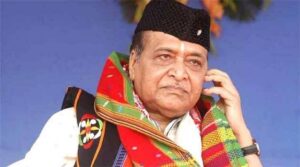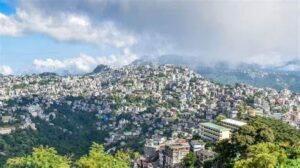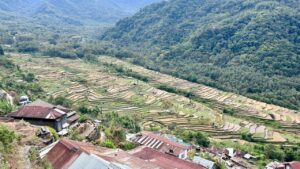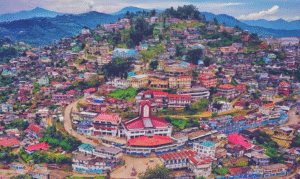Thuingaleng Muivah is a pivotal figure in the political narrative of Northeast India, especially in relation to the Naga nationalist movement. As the General Secretary of the National Socialist Council of Nagalim (Isak-Muivah), or NSCN (IM), Muivah has not only led one of the most influential insurgent groups in the region but has also played a critical role in shaping the dialogue for peace between the Naga people and the Indian state. His journey from a small village in Manipur to becoming the voice of Naga political aspirations is one marked by conviction, strategy, and relentless advocacy.
Early Life and Background
Born in 1929 in Somdal village, located in the Ukhrul district of Manipur, Thuingaleng Muivah belongs to the Tangkhul Naga tribe, one of the many Naga communities spread across Northeast India and parts of Myanmar. Growing up in a region marred by ethnic fragmentation and historical marginalization, Muivah was exposed early to the complexities of identity, territory, and governance.
He pursued higher education at Gauhati University, followed by studies at the University of Delhi, where he sharpened his understanding of politics, governance, and indigenous rights. His academic background would later shape his role as both a revolutionary leader and a chief negotiator in peace talks.
Joining the Naga National Movement
Thuingaleng Muivah’s political activism began with his association with the Naga National Council (NNC), the first organized political platform for Naga self-determination under the leadership of A.Z. Phizo. The NNC had declared Naga independence on August 14, 1947, a day before India’s independence, asserting that the Naga people had never been a part of the Indian Union and therefore deserved a sovereign homeland.
Muivah joined the NNC in the 1960s, during the height of tensions between the Naga rebels and the Indian government. The period witnessed armed uprisings, suppression, and deep-rooted mistrust between the Naga population and state authorities. As a rising leader, Muivah became disillusioned with what he saw as compromises made by the NNC, particularly the Shillong Accord of 1975.
Breakaway and the Formation of NSCN
The Shillong Accord was signed between a faction of the NNC and the Government of India, wherein the NNC agreed to give up arms and accept the Indian Constitution. For many hardline Naga nationalists like Muivah, this accord was seen as a betrayal of the Naga cause.
In 1980, Muivah, along with Isak Chishi Swu and S.S. Khaplang, formed the National Socialist Council of Nagaland (NSCN) to continue the armed struggle for Naga independence. The new organization was committed to creating a sovereign Naga homeland based on socialist and Christian principles. It rejected the Shillong Accord and sought a more robust political and military campaign for self-determination.
However, internal ideological and tribal differences led to a split in 1988:
- NSCN (IM): Led by Isak Chishi Swu and Thuingaleng Muivah
- NSCN (K): Led by S.S. Khaplang
The NSCN (IM) under Muivah’s leadership would go on to become the most influential and dominant Naga insurgent group.
Political Ideology and Vision
Muivah’s political ideology is centered on Naga nationalism and the creation of “Nagalim”, or Greater Nagaland—a proposed homeland that includes all Naga-inhabited areas across Nagaland, Manipur, Arunachal Pradesh, Assam, and parts of Myanmar. NSCN (IM) under his command advocated for:
- A separate Naga flag and constitution
- Sovereign governance structures
- Preservation of Christian values, which are deeply rooted in Naga society
- A socialist framework to ensure justice and equality among Naga tribes
He has often reiterated that the Nagas have a distinct culture, language, and history that sets them apart from the rest of India. For Muivah, any settlement with India must recognize this uniqueness.
NSCN (IM)’s Armed Struggle
During the 1980s and 1990s, the NSCN (IM) carried out a sustained guerrilla campaign against Indian security forces, operating across the jungles of Nagaland and bordering Myanmar. The group established a de facto government-in-exile with its headquarters at Camp Hebron near Dimapur, Nagaland.
NSCN (IM) also created administrative departments such as Education, Finance, Foreign Affairs, and Internal Security, projecting itself as a parallel governance body. Under Muivah’s direction, the organization engaged with international human rights bodies and sought global recognition for the Naga cause.
Peace Initiatives and Ceasefire Agreement
After decades of insurgency, a turning point came in 1997 when NSCN (IM) signed a ceasefire agreement with the Government of India. This marked the beginning of a peace dialogue that has lasted for more than two decades. The ceasefire brought relative calm to the region and opened the door for political negotiation.
Muivah, as the principal representative of NSCN (IM), led over 100 rounds of talks with Indian interlocutors. He met with Indian Prime Ministers and Home Ministers over the years, presenting the core demands of the Naga people while remaining open to dialogue and compromise.
Framework Agreement – A Landmark in Indo-Naga Relations
On August 3, 2015, the NSCN (IM) and the Government of India signed a historic Framework Agreement in New Delhi. The agreement was signed in the presence of Prime Minister Narendra Modi and then Home Minister Rajnath Singh.
While the complete text of the agreement has not been made public, it is believed to have acknowledged:
- The unique history of the Nagas
- Their sovereign identity
- The need for a shared future based on mutual respect
Thuingaleng Muivah called the Framework Agreement a “historic step” that recognized the identity and rights of the Naga people. It was seen as a personal achievement for Muivah, who had spent decades fighting, negotiating, and advocating for this recognition.
Stumbling Blocks and the Unresolved Settlement
Despite the initial optimism, the final settlement based on the Framework Agreement has not materialized. Major points of contention include:
- The NSCN (IM)’s demand for a separate flag and constitution, which the Indian government is reluctant to concede post the abrogation of Article 370 in Jammu and Kashmir.
- The idea of Greater Nagalim, which faces stiff opposition from neighboring states like Assam, Manipur, and Arunachal Pradesh.
- Internal dissent within Naga civil society and other insurgent groups.
Muivah has insisted that no solution will be acceptable unless it is based on the framework agreement and includes the flag and constitution, which he calls the “soul of the Naga people.”
Personal Life and Leadership Style
Thuingaleng Muivah is known for his simple lifestyle, strong Christian values, and resolute leadership. Despite being in his 90s, he remains active in policy decisions and continues to command the respect of his people and cadres. His speeches often call for unity among Naga tribes and the importance of preserving Naga heritage.
He resides at Camp Hebron, surrounded by senior NSCN (IM) leaders and a security apparatus, continuing to guide the movement even in the twilight of his life.
National and Regional Impact
Muivah’s impact extends beyond the Naga territories. His long-standing negotiation with India is among the longest-running peace dialogues in South Asia. He has:
- Brought the Naga issue into mainstream political discussion
- Positioned the Naga cause as a symbol of indigenous resistance
- Contributed to regional stability by opting for negotiations over violence
His efforts have also encouraged other armed groups in Northeast India to come to the dialogue table, making him a significant influence in the region’s overall peace process.
The Road Ahead
As of 2025, the final Indo-Naga political solution remains elusive, but the foundation laid by Thuingaleng Muivah remains strong. Whether or not a formal agreement is signed during his lifetime, his legacy as the chief architect of modern Naga political thought is secure.
Muivah’s insistence on dialogue over confrontation, and his ability to navigate complex political realities, make him a unique leader in India’s post-independence history. His balancing act between armed rebellion and peace negotiation continues to shape the future of Naga identity and integration.
Conclusion
Thuingaleng Muivah’s life and leadership encapsulate the hopes, struggles, and identity of the Naga people. As General Secretary of NSCN (IM), he has redefined what it means to lead a nationalist movement—not just through resistance but also through dialogue, diplomacy, and resilience.
From Somdal village in Manipur to global diplomatic stages, Muivah has remained unwavering in his mission. His legacy is not just in the movement he led, but in the consciousness he shaped among generations of Nagas, urging them to believe in their uniqueness, to preserve their traditions, and to strive for a future built on honor and justice.






